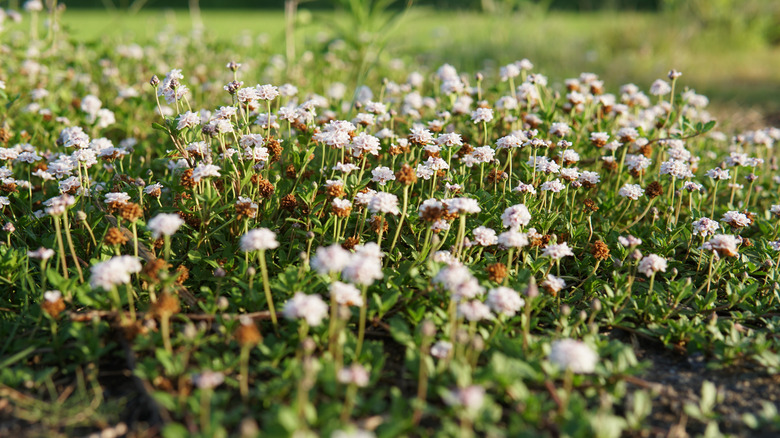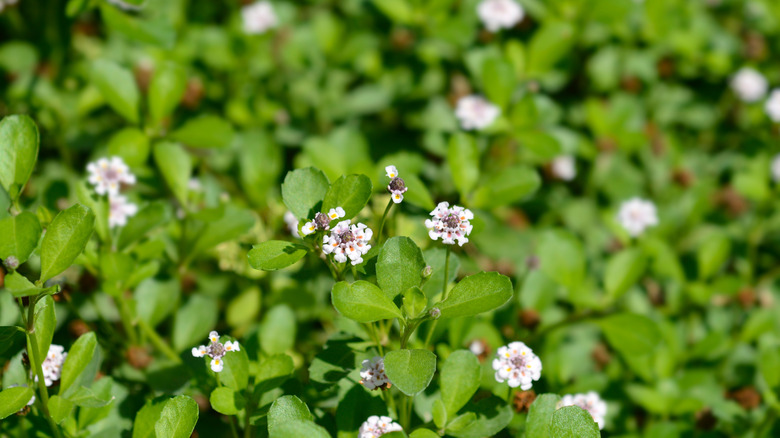The Watering Mistake That Causing Brown Spots On Kurapia Ground Cover
We may receive a commission on purchases made from links.
For homeowners and landscapers who want a beautiful, environmentally friendly plant aesthetic instead of grass, kurapia (Lippia nodiflora) is a favorite turf replacement. There are many benefits of growing heat-tolerant kurapia as a groundcover, with its low watering requirements, easy maintenance, and soft green look. But if uninvited brown spots start showing up, it can have even the most confident gardeners scratching their heads. The most likely reason for the patchy, ugly spots on your kurapia is that you're watering it too much.
One of the reasons kurapia is a superior drought-resistant grass alternative for your yard is that it thrives with a less-is-more approach, unlike traditional lawns. While well-intentioned, overwatering is a common cause of those annoying brown patches. The secret to preventing those brown spots is to hit that sweet spot with your watering schedule. Kurapia is drought tolerant by nature, meaning once established, it prefers drier conditions. Instead of a light shower each day, plan on deeper, less frequent watering sessions. This helps the roots to go deeper, preventing brown patches and also fortifying the plant's overall resistance to heat and drought stress.
When and how to water kurapia
Both time of year and time of day also play a role. During the winter months, kurapia only needs to be watered once every three weeks, while it should be watered at least once a week in the summer. Morning watering sends moisture to the roots, which evaporates during the day, helping to avoid fungus diseases caused by prolonged dampness. On the other hand, you should think twice before watering your plants at night since your kurapia will end up sitting in moisture for hours, creating the perfect environment for those nasty brown spots to form.
Another reason to avoid excessive watering is that it saturates the soil and leaves, making the plant vulnerable to fungal diseases, which typically show up as brown spots. Additionally, if there is water on the plant's foliage, it creates a breeding ground for fungal spores and bacteria. Kurapia's deep root systems enable it to reach moisture deeper underground, meaning that surface watering usually does more harm than good.
If you fear overwatering has already done damage, step back and allow the soil to dry out before resuming a sensible schedule. To speed up the recovery, consider removing a thin layer of the topsoil and applying a fungicide, such as Heritage G fungicide. With careful monitoring and adjusted watering, those brown spots will soon be a thing of the past.

